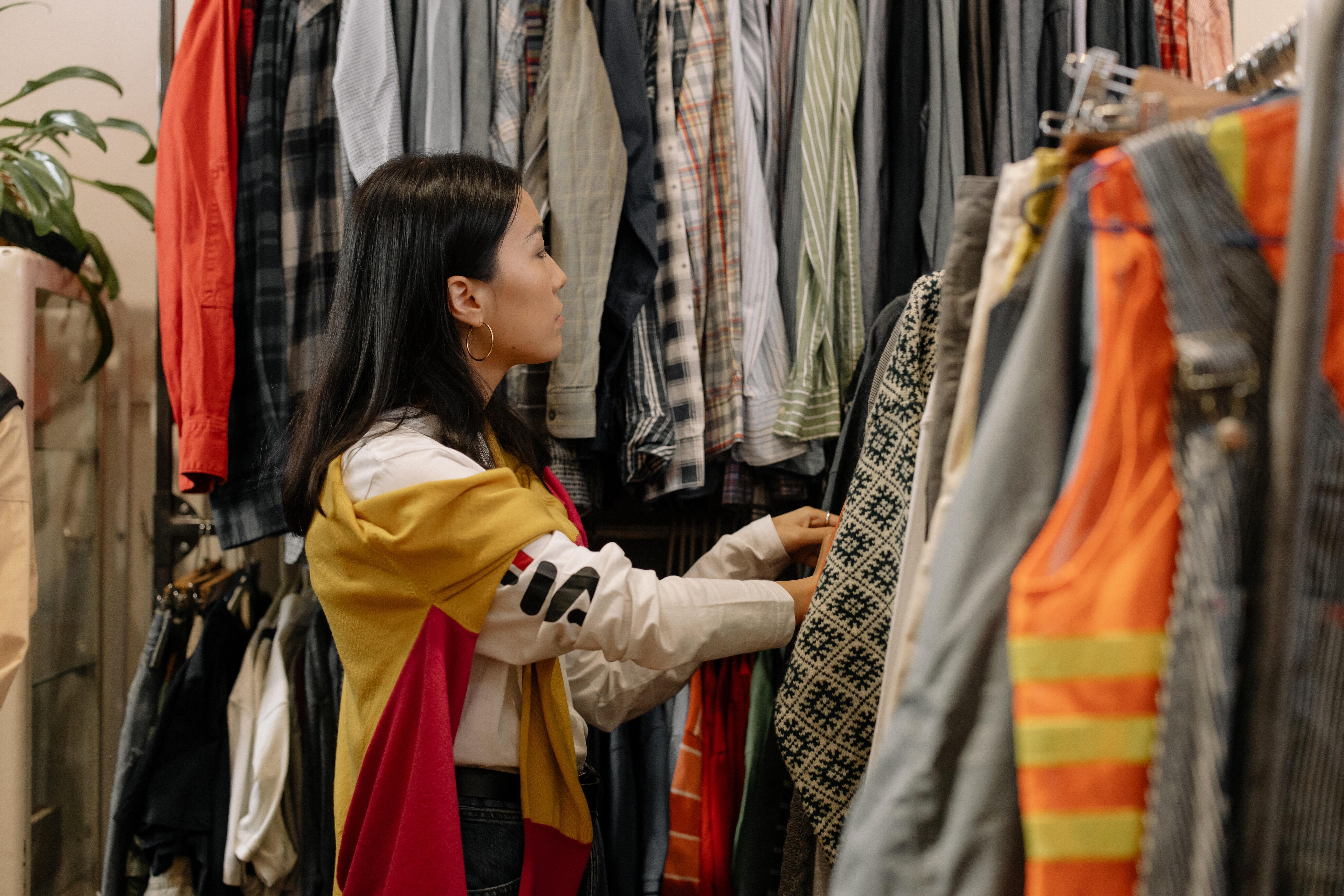
29 October 2025
Meaningful corporate gifts that last
- COSH! Member Publicity
- Gift Guide
- Recycle
Do you know where your textile goes after you donate it in a clothing container? COSH! investigated and clarified the complex structure of second hand clothing collection and processing. Are you curious to know in which container your clothing has the best chance to get a second life locally?
A large amount of the clothing that ends up in the textile containers is no longer wearable and does not get a second life. This is one of the consequences of the fast fashion industry that produces a large amount of low quality clothing. 30% of our clothes are sorted for reuse, 70% goes to a landfill or is classified as household waste. Of the 30% reuse, only 64% is wearable clothing, but this figure is decreasing every year.
In Flanders, there are 142 textile processors recognised by OVAM (the Public Waste Agency of Flanders) that are responsible for collecting, sorting and recycling textiles. This number is in reality even higher as it is based on the environmental permit data. In addition to the recognised players, the profitable sector also has unrecognised textile processors that do not meet the set conditions.
The clothing containers and textile collection services spread throughout Belgium can be both social and private actors.
COSH! made an overview of the largest actors of collectors and their second-hand shops in Belgium:
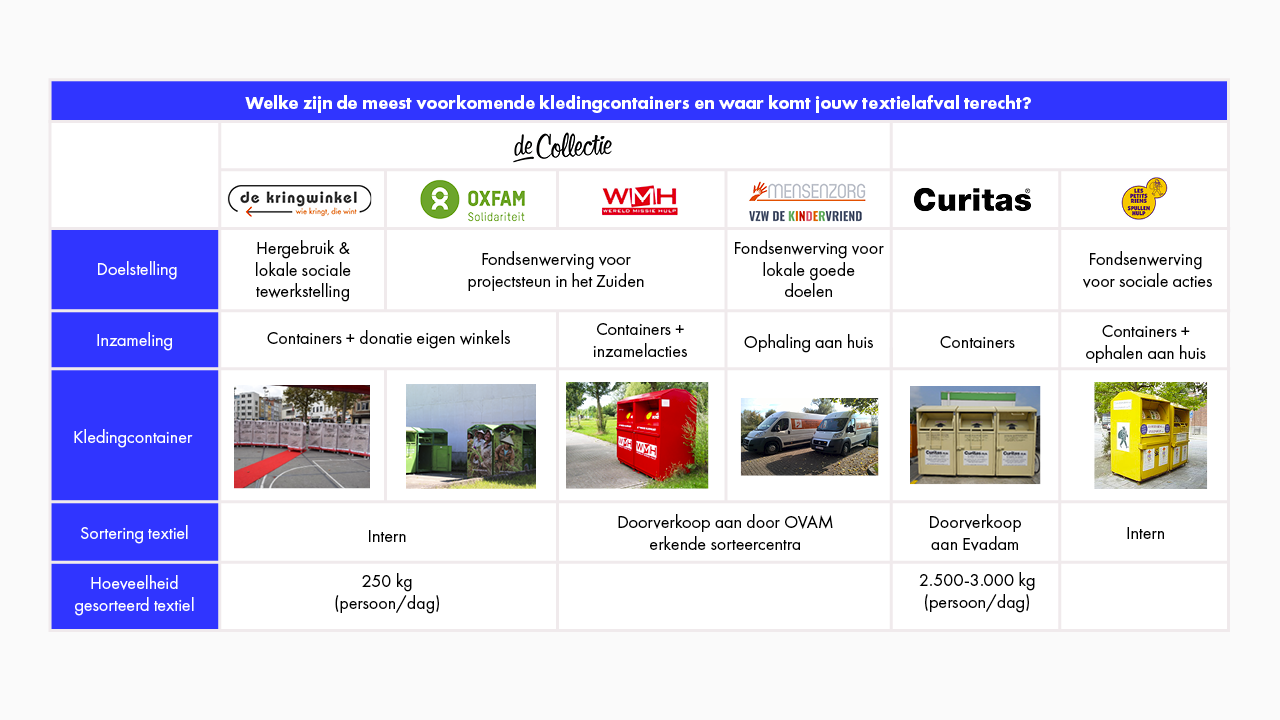
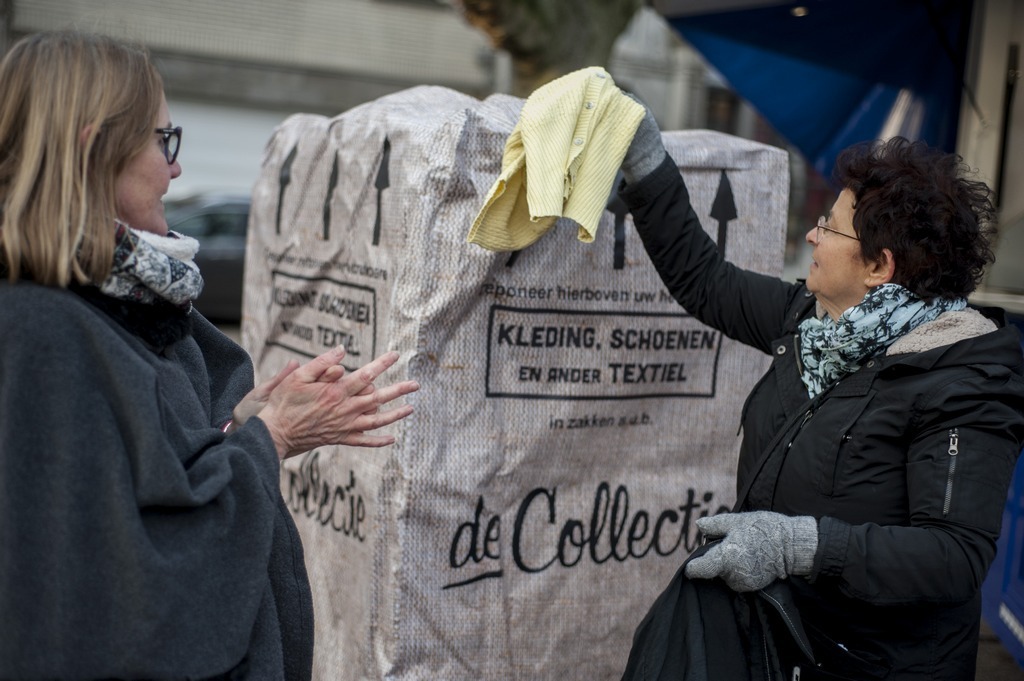
Antwerp has already taken several steps to better organise the process of collection and processing. One of the initiatives is
De Collectie. This organisation consists of five Antwerp non-profit organisations:
De Kringwinkel Antwerpen, Oxfam, Wereld Missie Hulp, Kindervriend and Mensenzorg are responsible for the integral collection and processing of all textiles. This means that your textile with stains, tears or holes will also be accepted. The partners of De collectie make sure that what is no longer sellable is recycled.
Handing in textiles at ‘De Collectie’ can be done in 3 ways:
When you bring clothes to The Collection, you are supporting local social employment projects as well as charities, here in Antwerp and in third-world countries.
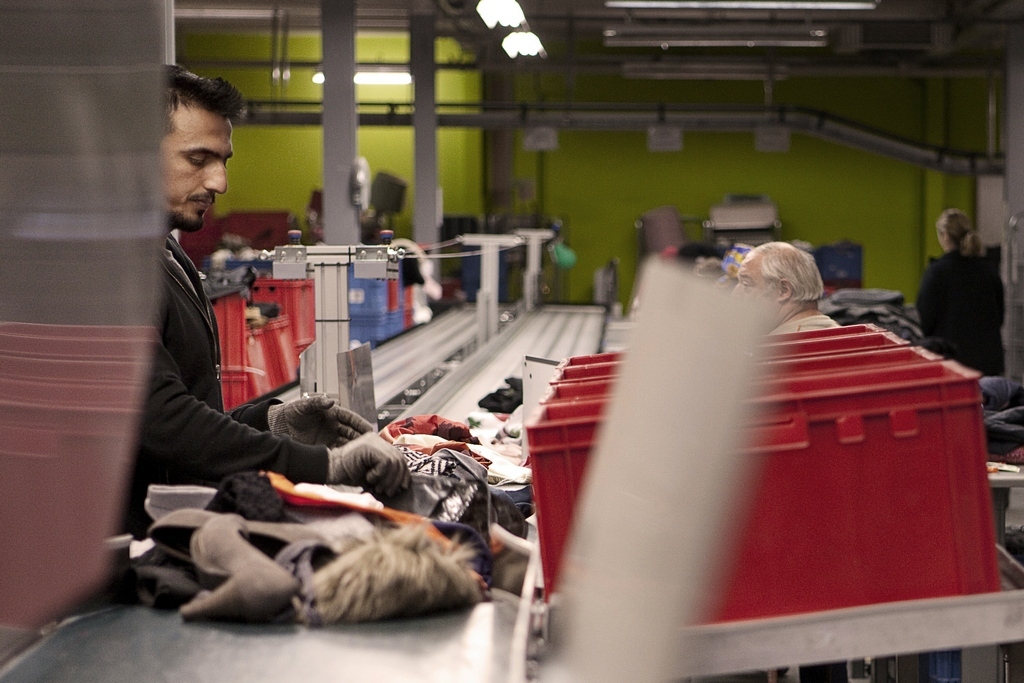
The clothing containers and clothing and textile collection services distributed in Belgium can be both social and private actors. The social actor De Kringwinkel (Antwerp) is the only one who is focused on offering employment to people who have difficulty finding their place in the labour market. They also sell the clothes they collect but pay their employees with the proceeds. This ensures a transparent chain that is not profit-driven. Of the received donations they sort and generally keep 40% to sell them in their own stores network. This is more than other sorting facilities keep for local sales.

‘Wereld Missie Hulp’ (WMH) is a non-profit organisation that wants to improve people’s living conditions in a sustainable way through development projects. A few years ago, the organisation took major steps and drastically changed its organisational model. They used to have 1,400 textile containers. They sold the collected textiles and then sent them abroad for charity. For a few years, WMH noticed that this market was saturated and decided to stop. They now work together with Wolkat, a circular sorting and recycling company, to process the collected textiles into new products themselves. This gives the textiles a second life locally. WMH thus demonstrates that social players can also take responsibility for residual fractions throughout the chain. WMH also sells to screened sorting companies. In this way, they receive money per collected kg which they can invest in their projects.
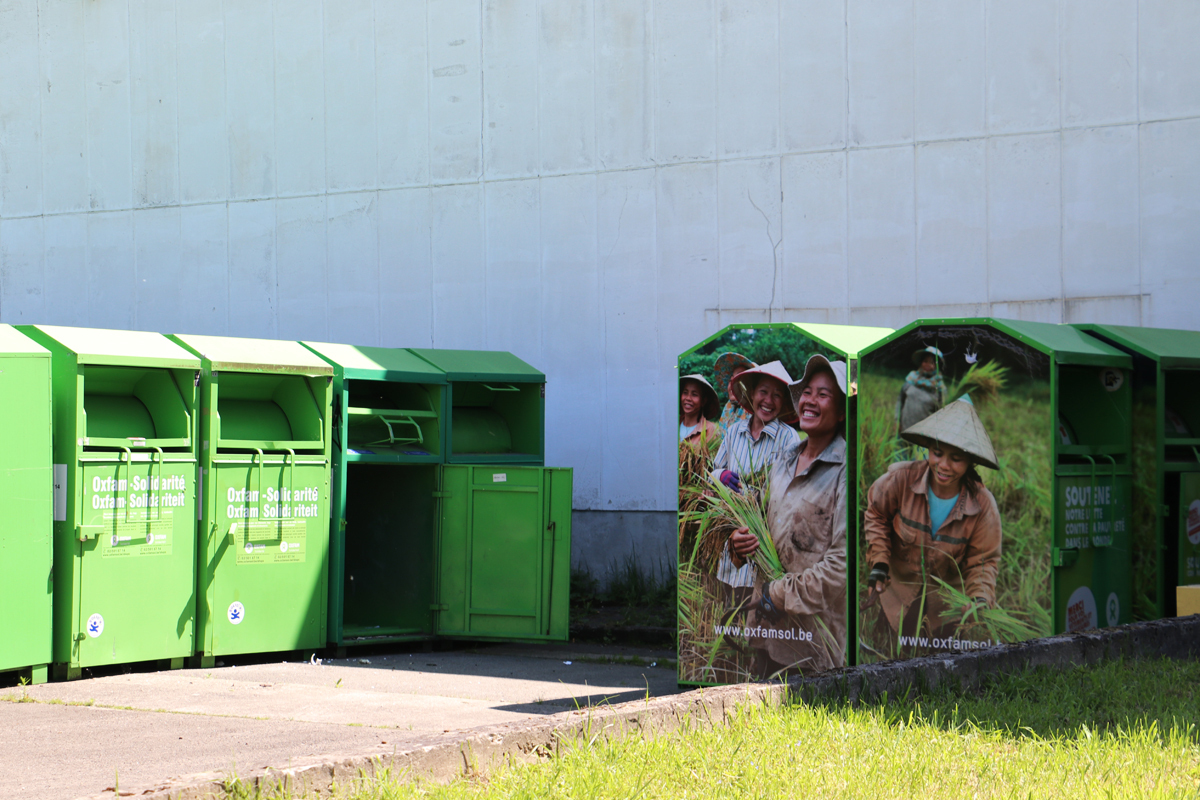
At Oxfam, 10% is sold in their own stores. 90% are given another use. Oxfam started a new project last year. Starting this winter (2021), winter clothes that do not meet the shop quality standards will be sold at 3 euros a kilo. In Brussels, Antwerp and Liège, they want to make second-hand clothes, especially winter clothes, truly accessible to everyone and help tackle the problem of poverty in Belgium.
Besides the social actors, there are also private companies that collect and process clothing. These companies often have profit as their main motive. But what exactly happens to clothes that are donated by private actors?
Private companies often use images of social organisations to which they donate a small part of their profits. This makes the impact of these clothing donations unclear.
The largest private collector in Belgium is Curitas, part of De Boer Group Holland. This company specialises in collecting, sorting and recycling with various branches in Belgium, the Netherlands and Germany.

After collection, the textiles from the Curitas containers go to the sorting company Evadam in Roeselare. This company is also part of the De Boer Group and is one of the larger sorters in Belgium. Around 60 tons of textiles are delivered daily, originating from various European countries such as Germany, Belgium, the Netherlands and France and from different types of actors including the social sector.
The sorting process takes place in several stages. The first stage is pre-sorting, in which the clothing is divided by type (e.g. skirts, trousers, etc.). Afterwards, there is a final sorting where the quality of the items is looked at. This way it is decided which items are still saleable and which are too damaged. The damaged items are then divided by type of textile so that the clothing can be recycled optimally and as little clothing as possible is lost.
Evadam’s employees process about 2500 to 3000 kg of textile per day, an enormous amount! This figure is the result of an efficient working method in combination with extensive automation. At COSH, we see a lot of potential in advanced sorting, among other things, for circular designers who want to use the well-sorted fractions to create new collections.
After sorting, the textiles are packed according to their quality. Each day, Evadam ships 40 containers of second-hand clothes abroad for customers. Abroad, the textiles are sold to wholesalers who distribute them in their own way.
On an annual basis, only 8% of the donated textiles are considered waste. This is, for example, wet or soiled textiles or goods that are really unusable. Evadam’s partners process the soiled textile waste in a high-calorific manner.
Important for donations: Do not use the clothing containers as rubbish bins. Unfortunately, this happens very often. Since rubbish bags have gone up in price, clothing bins are used as a cheap alternative to the rubbish bin for non-textile products and/or for heavily soiled textiles. This does not mean that textiles themselves must be thrown in the rubbish bin. For each type and damaged textile there is a better destination. Discover it here in our infographic! |
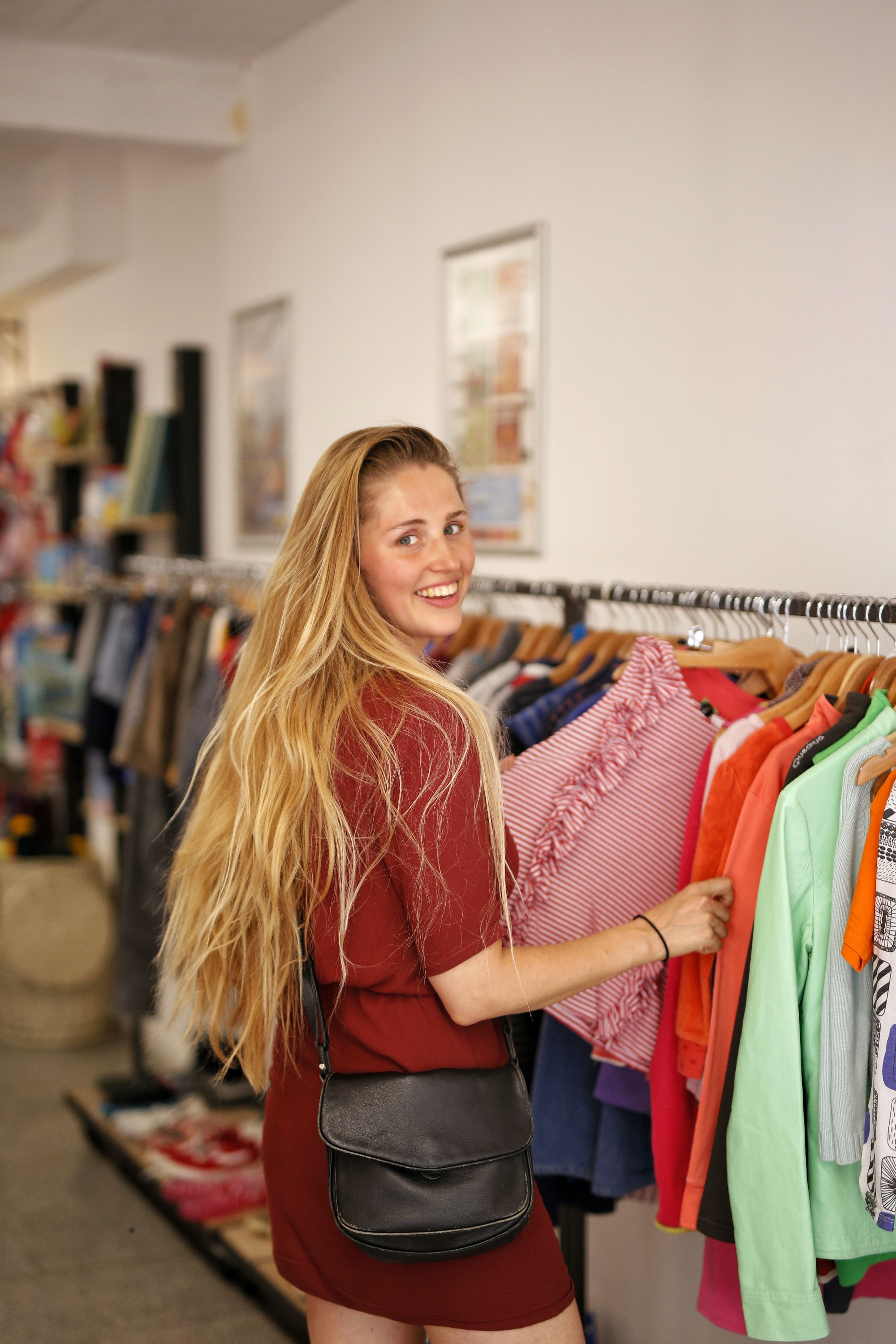
The advantages of ‘preloved fashion’
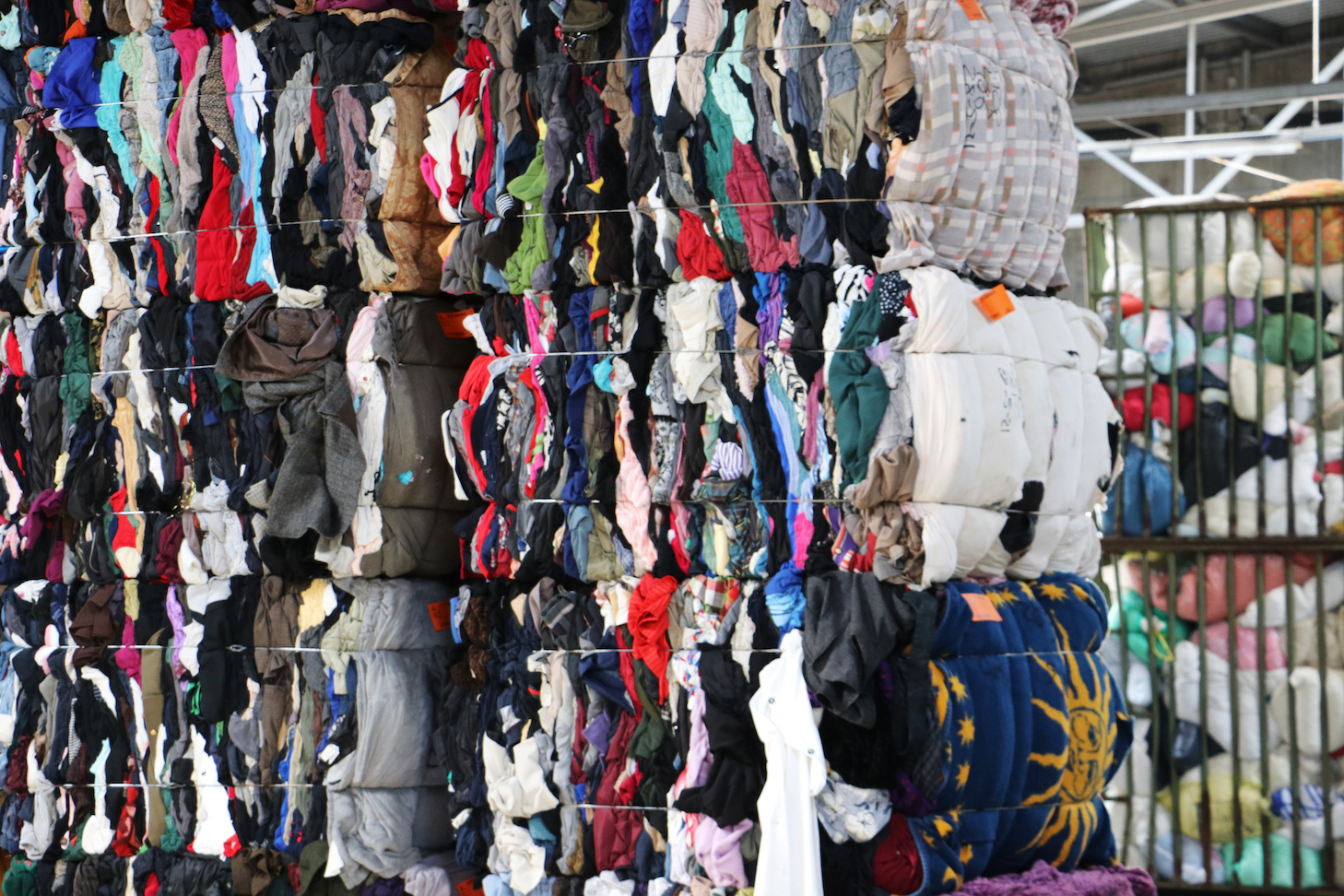
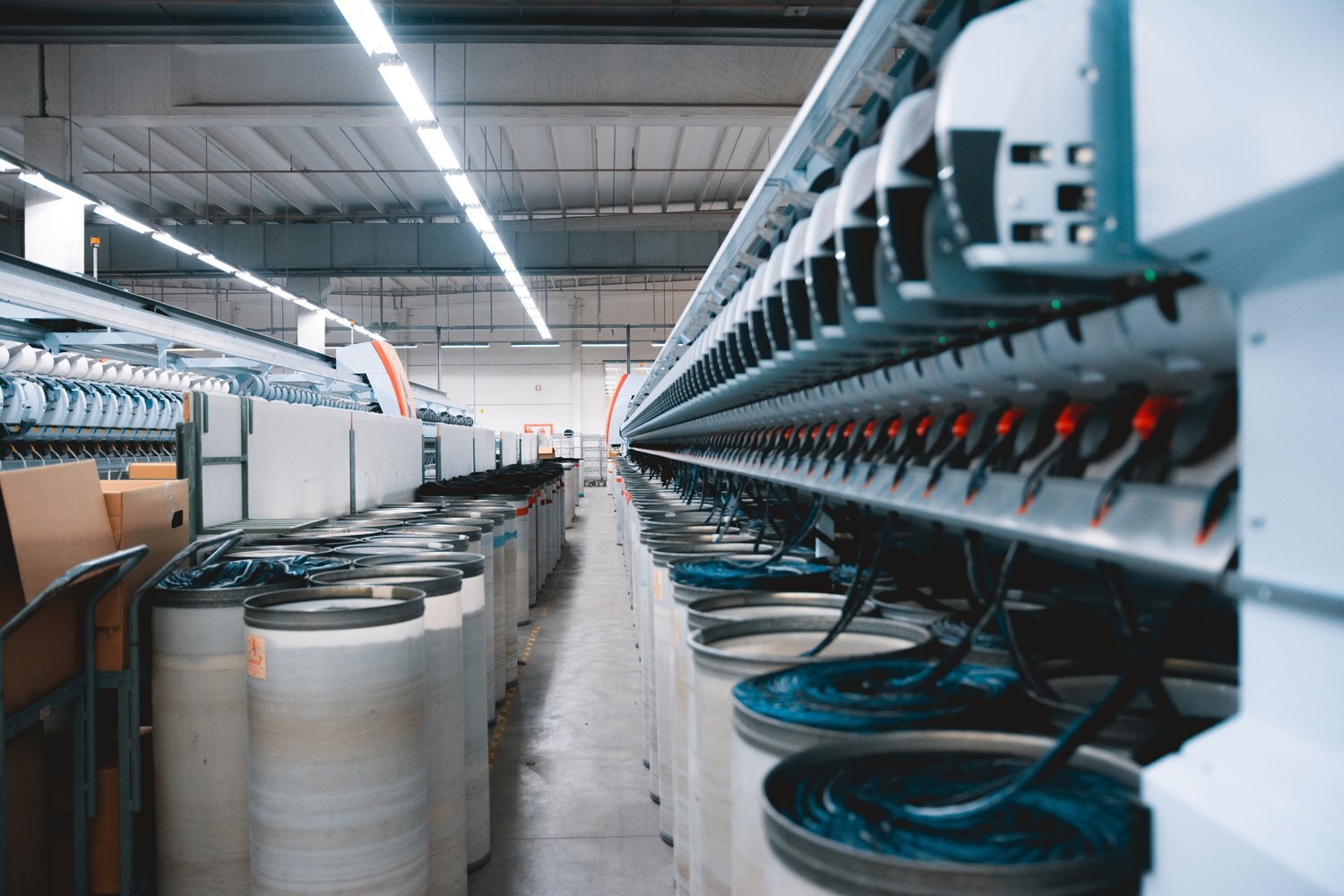
How does recycling of clothing work?
